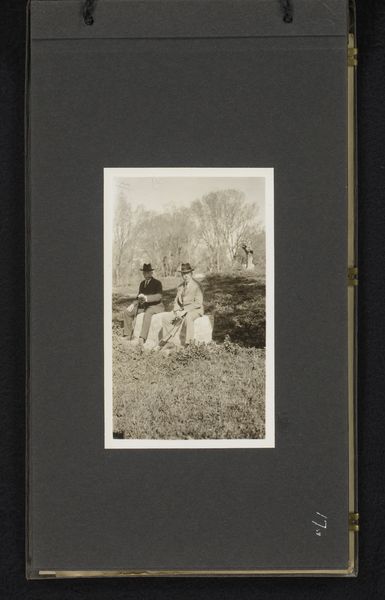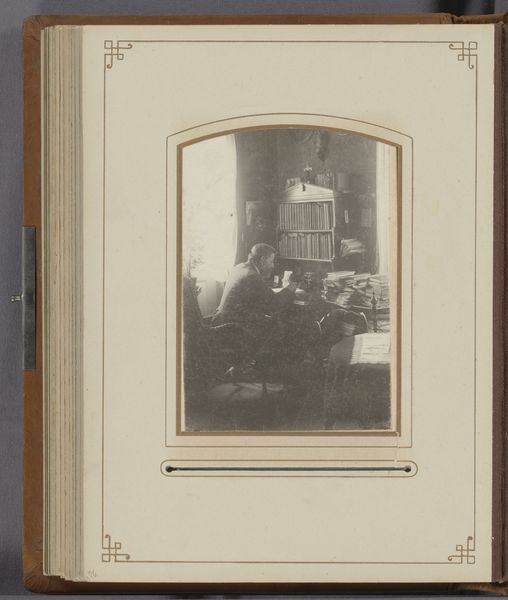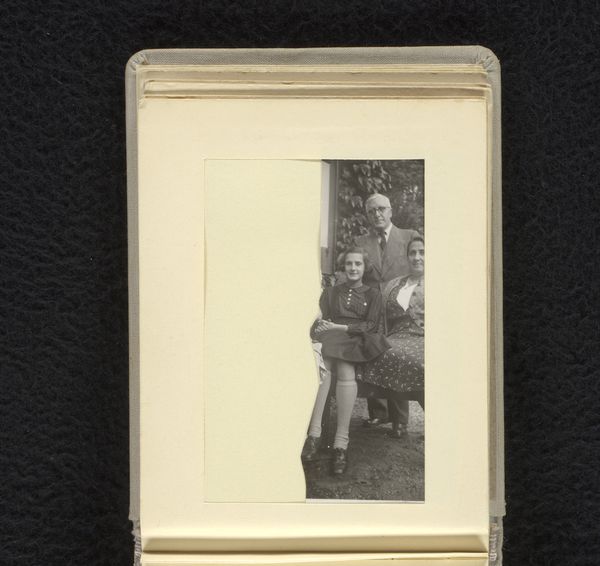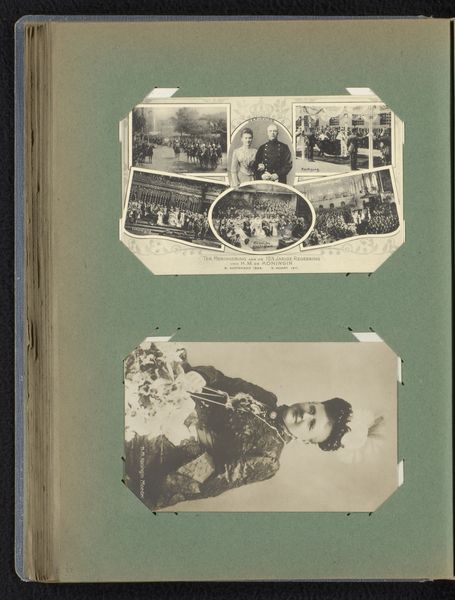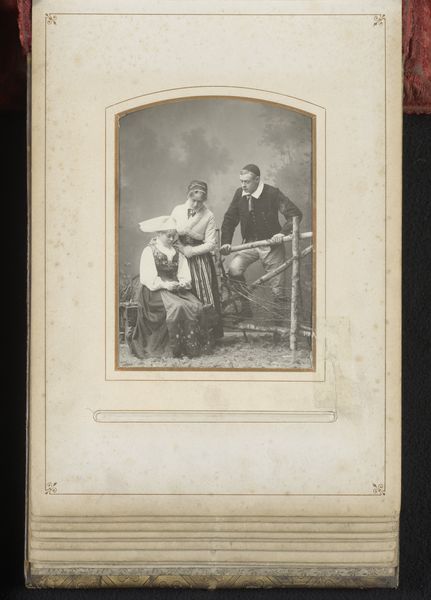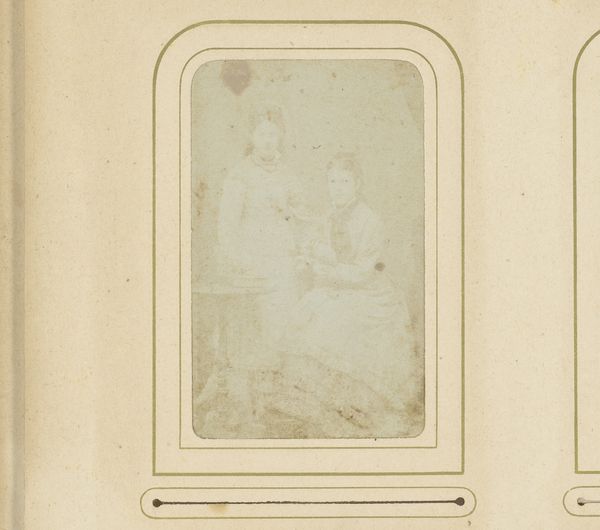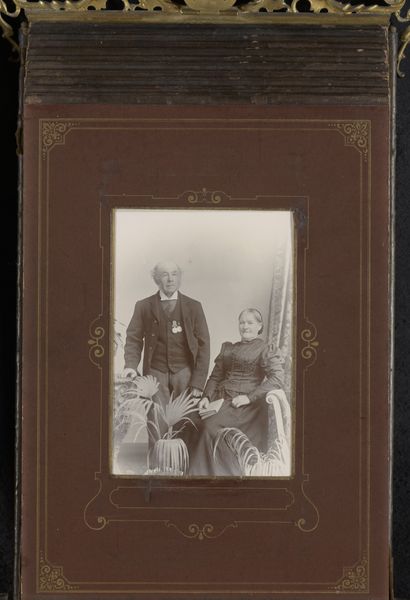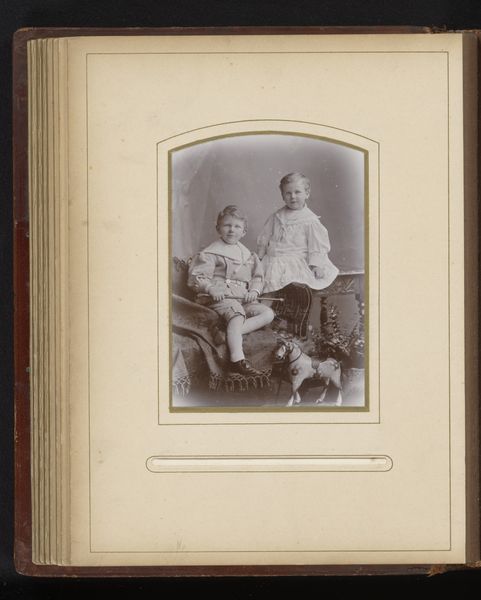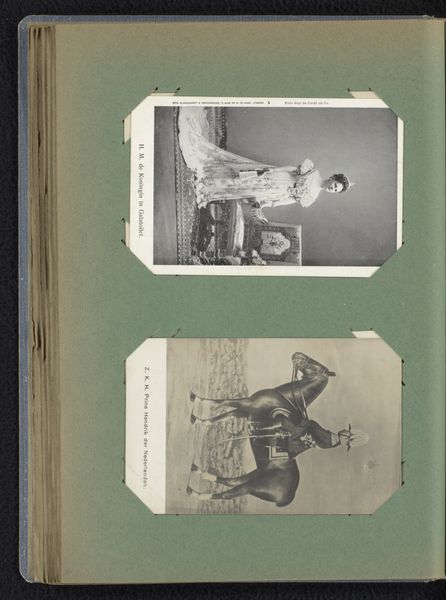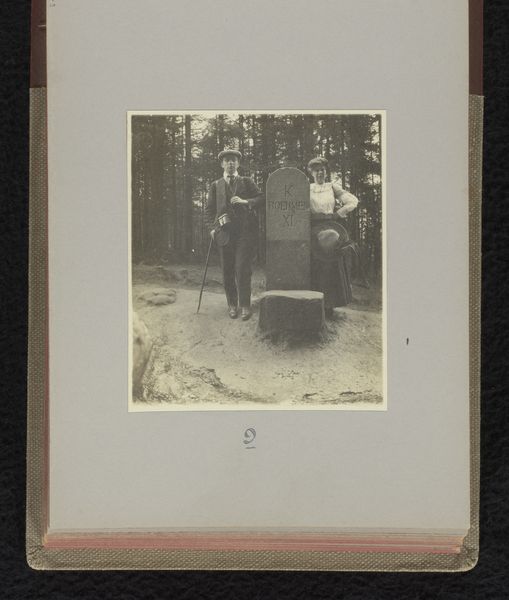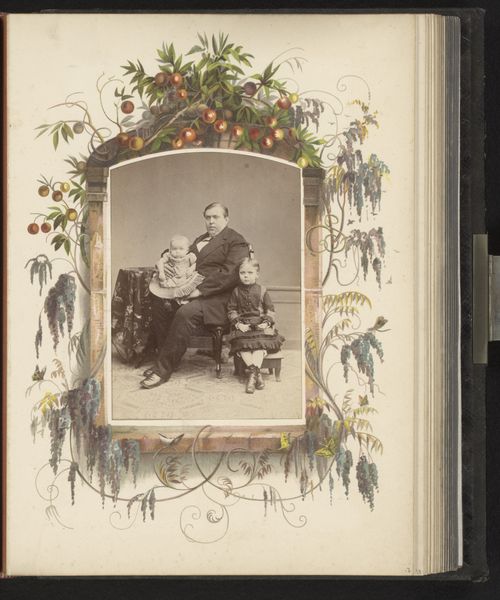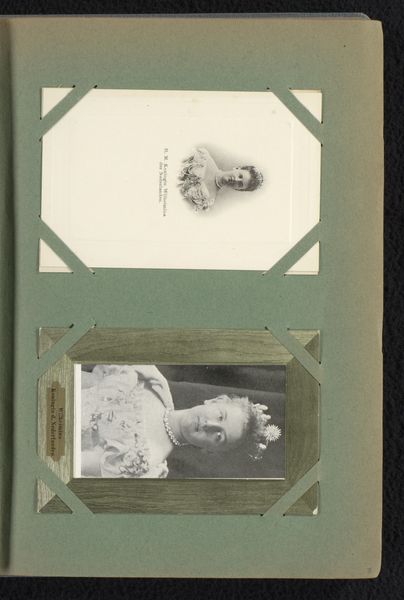
Dimensions: height 142 mm, width 93 mm
Copyright: Rijks Museum: Open Domain
Curator: Looking at this vintage photograph, “Portret van een staande jongen en een zittend meisje,” made sometime between 1880 and 1920 by W. Boughton & Sons, I'm struck by how the tones and composition evoke such a specific, sepia-tinged nostalgia. It really feels like a window into a different era, doesn't it? Editor: It does! The sepia tones definitely contribute to that feeling. I’m also noticing the props. It looks almost like a theatrical set. How do you interpret the material elements of the photograph itself? Curator: Precisely! Think about photography in this era. The tonal paper, the chemicals used – all incredibly labor-intensive. The muted color palette isn’t just an aesthetic choice; it's a product of the technology available. But consider the backdrop as well: How does the studio's constructed artifice interact with the seemingly "natural" representation of childhood? The bench, the plants… These staged elements were not simply “there”, they are carefully constructed items reflecting bourgeois values concerning leisure. The choice of photography as a medium itself – a *mass* medium— what does it say about the growing importance of documenting and displaying family and status? Editor: So, the “brown colour palette”, is that more a symptom of the limitations of photography then, or a purposeful artistic choice for portraying children? Curator: It is more intrinsic, a constraint, that became aesthetic! Knowing photography was costly and the labor that went into creating these idealized depictions changes how we view it. These objects reflect aspiration as much as representation. And aspiration comes at a price. How were these children posed? Did the photographer profit, becoming wealthy off the labor, of the middle classes pursuit of images, documenting their place in society? What can we see *between* the sitters here? Editor: It’s incredible to consider all these layers. I hadn't thought about the cost or labor involved in early photography beyond the time spent taking the picture! Curator: Right? Now when you look, think about the socio-economic implications, production costs, labor… It changes the whole experience, doesn’t it? Editor: Absolutely. I’ll never look at an old photograph the same way again! Thanks so much for this perspective.
Comments
No comments
Be the first to comment and join the conversation on the ultimate creative platform.
